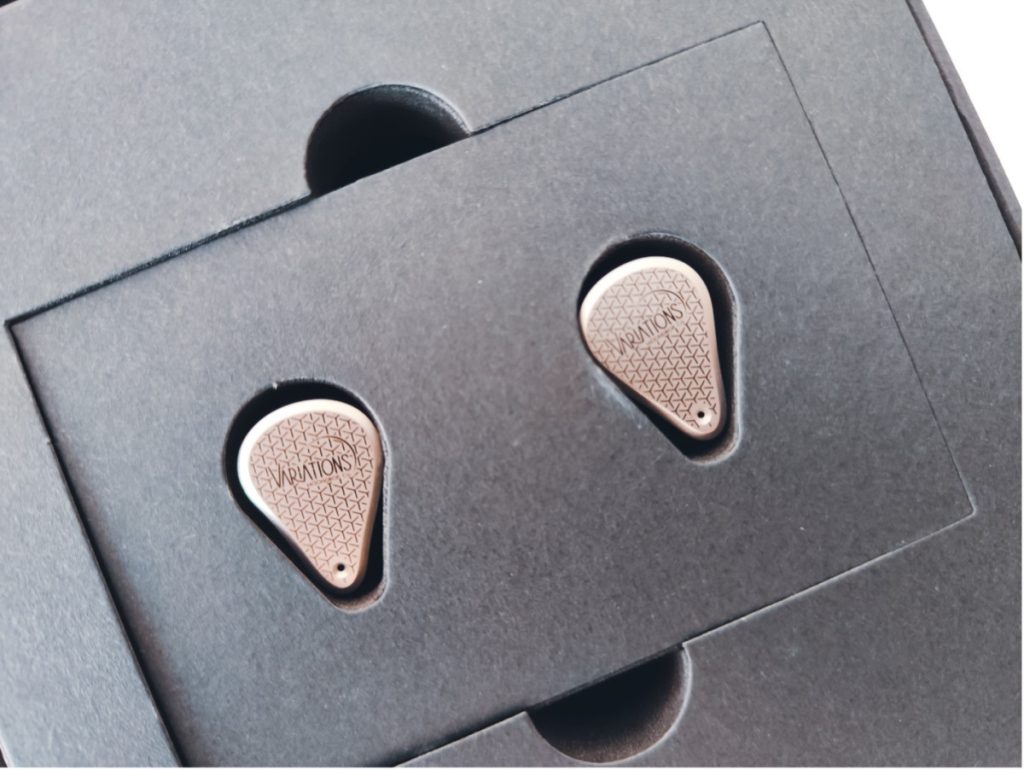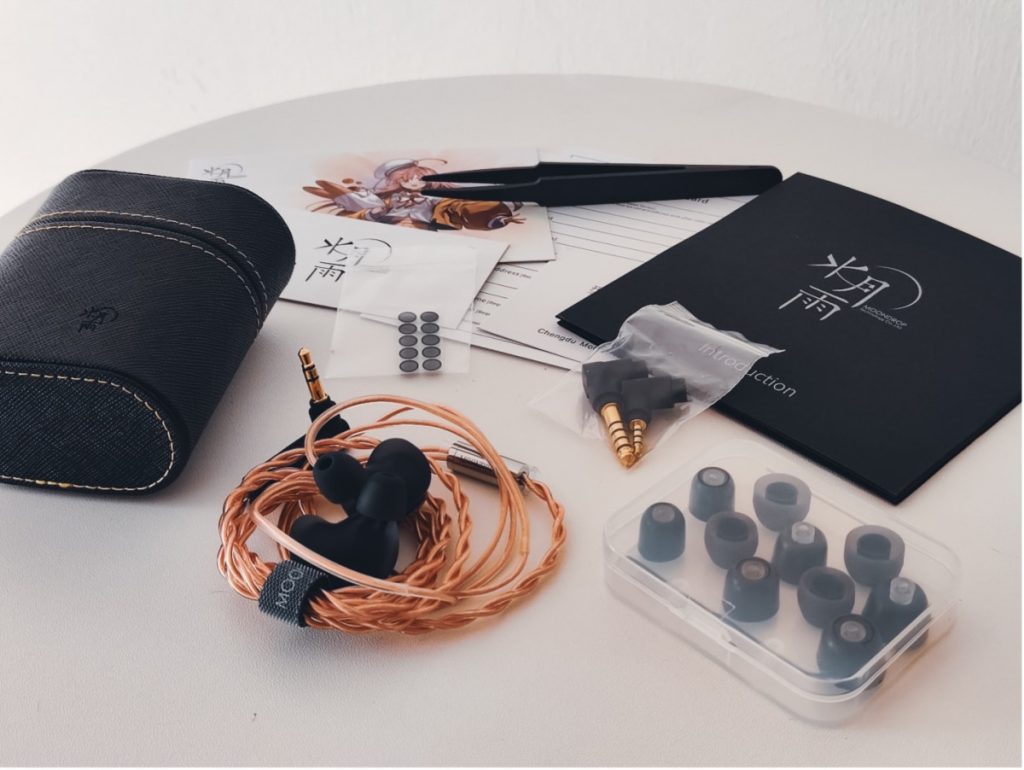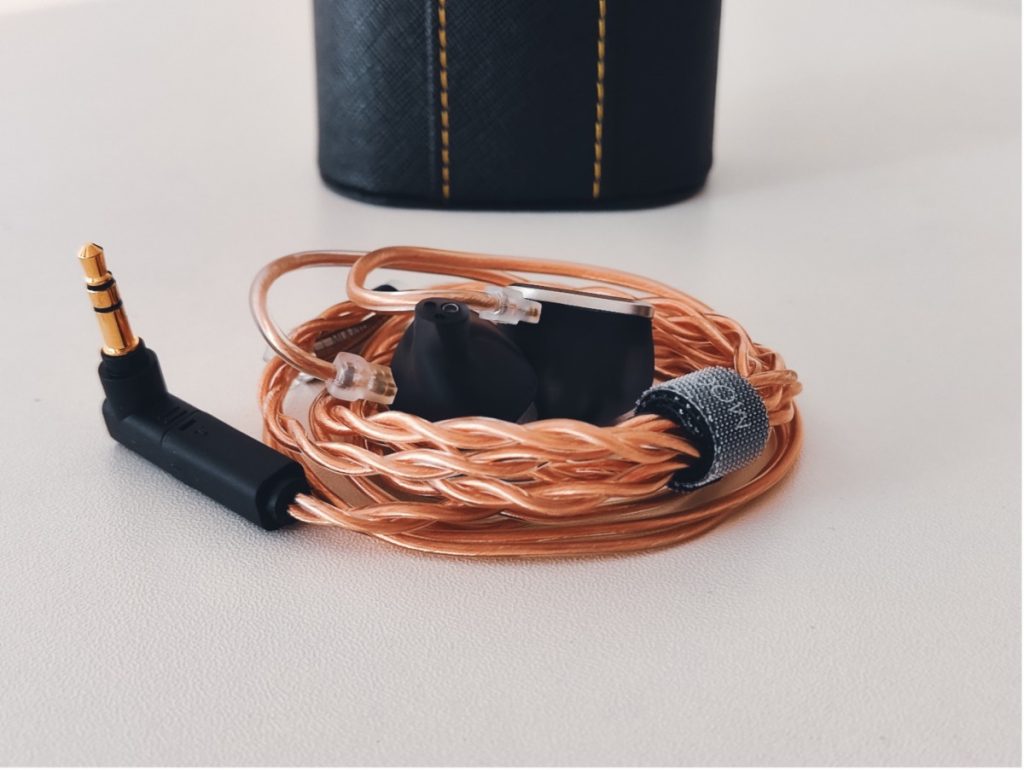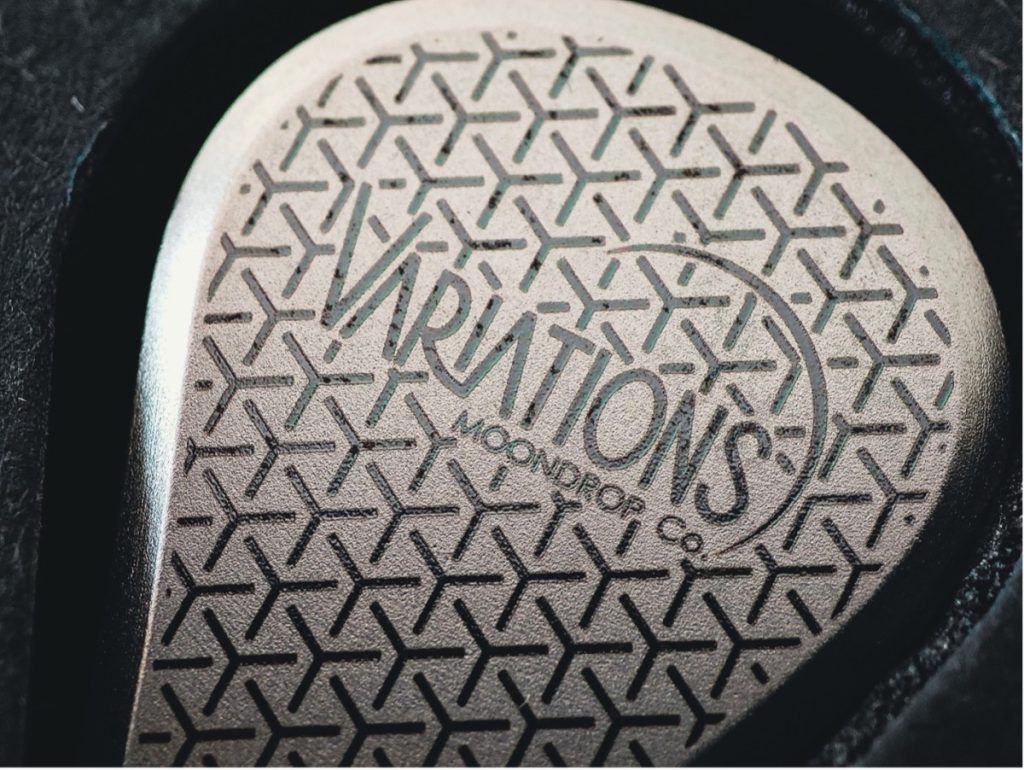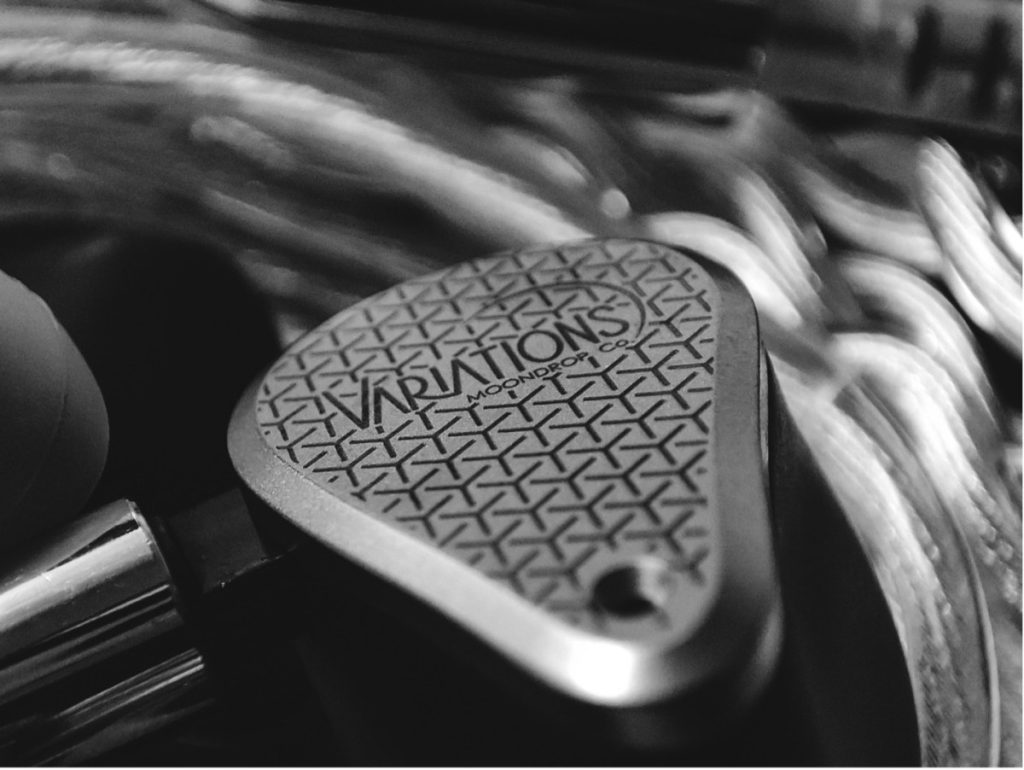Introduction
The use of electrostatic driver is not a new thing in the IEM space. Back then, the Shure KSE1500 is one of the prime examples of an IEM that uses a “true electrostatic speaker” which requires an energizer in order to charge itself. But it costs a staggering $2999 in price. As of 2022, the scene has changed quite a bit. Sonion electrostatic tweeter (not a true electrostatic but a dual electret instead) is now the preferred driver as it offers “permanent charge” and comes with a miniature transformer that can be shoved in a shell of an IEM. Often coupled with dynamic driver (DD) and balanced armature (BA), most triple hybrid or tribrid IEM nowadays can be found at much affordable price of ~$500. This includes the Moondrop Variations, a 1DD + 2BA + 2EST drivers combo monitor. To see what this IEM can offer, do consider having a good read in this article.
Packaging & Accessories
Moondrop usually does fine when it comes to their IEM packaging. So, the case here for Variations is also great, nothing to be complaint about as I generally prefer simpler packaging. But I do understand if you’re expecting more luxurious packaging presentation such as Fiio usually offers. So, the build design of the shell is made of a 3D printed resin with frosted surface treatment. I personally like the looks and comfort in my ears, but I have to mention that they are on the big side and oil magnet unfortunately. The tessellation patterns on the sandblasted metal faceplate are also nice to look at. Meanwhile, stock cable choice is good in which they include their own modular plug PCC cable. In terms of their stock eartips, they are okay, but I found that they boost the upper mids quite a bit to my liking. That being said, the Variations is quite sensitive to eartips and cables. So, my preferred eartips and cables are the Acoustune AET07 eartip and Yongse 19 AWG SPC cable for a more versatile and balance sound. You also do get a tweezer alongside nozzle filters for extra protection.
Specifications
- Frequency Response: 9 – 40 kHz (IEC61094, Free Field)
- Effective Frequency Response: 20 – 20 kHz (IEC60318-4, -3 dB)
- Sensitivity: 118 dB / Vrms @ 1 kHz
- Impedance: 15.2 Ω @ 1 kHz ± 15 %
- T H D: < 1 % @ 1 kHz
- Drivers: 1DD + 2BA + 2EST
- Bass driver: 10 mm LCP liquid crystal diaphragm dynamic driver
- Midrange driver: Softears-D-Mid-B customized midrange balanced armature drivers
- Treble driver: Sonion high performance dual electrostatic drivers
- Cavity material: stainless steel + resin
Retail Price & Where to Get
We would like to thank RED APE HEADPHONE STORE for giving us the opportunity to review this product. The Moondrop Variations is currently priced at ~RM 2159 (USD 487).
Moondrop Variations High Resolution Earphones with 2EST + 2BA + 1DD Tribrid IEMs | Shopee Malaysia
Source Pairing
-
Windows 10 > Fiio K9 Pro ESS / Questyle M15 > Variations
-
Sony NW-ZX300 > Variations
-
Android 12 > DDHiFi TC35B > Variations
Test Tracks
Tone & Presentation
Like most of their previous monitors, the Moondrop Variations still follows their own’s Virtual Diffuse Sound Field (VDSF) tuning, but this is the closest Harman neutral frequency response I’ve seen so far in an IEM. This means that the Variations has a large amount of subbass emphasis compared to its neutral amount of midbass. The lower midrange has a recession but rise back towards the 3 kHz region. Meanwhile, the treble remains neutral and extended. On ears, the Variations is simply a bass-boosted neutral IEM. So basically, you get both neutrality and fun.
Bass
Simply say the bass of the Variations is built different yet fantastic. While most of the IEMs have more focus on the midbass that usually bleed into the lower midrange, the Variations has an earth shaking subbass presentation with an ultra-clean midbass transition instead. The low end can go as deep as you can possibly imagine but the midbass is neutral and precise. Not only powerful in the slam, the resolving power and transient speed of the LCP dynamic driver are also sublime. Whatever BPM the song has, every nuance and texture of the notes in the low region can still be felt and appreciated. All praises aside, let’s discuss the other side of the story. First, the exaggerated amount of subbass can make the IEM sounds too bassy overshadowing the rest of the frequency especially with EDM. Second, the just right amount of midbass can also sound a bit thin for certain old records and rock songs. And finally, the timbre is not its forte, where some people may find it to be slightly dry. Although these don’t really bother me, it is important for me to mention that eartips and cable rolling are very helpful to mitigate those issues.
Midrange
The Variations’ midrange is slightly tilted towards the upper mids. Lower mids presence is slightly lacking to my preference not because it is physically recessed but due to the strong contrast between the bass and the treble. For midrange lover, male vocal and some midrange instruments may lack that richness that you’re looking for. Female vocal on the other hand is excellent. They do have the tendency to be tiny bit too bright at certain times but still on the safe level and can be remedied through eartips rolling. On the technical department, clarity and resolution are top notch for its price range. Here I have to give credit to Moondrop for utilizing the Softears BAs as the midrange drivers as they did sound really high in resolution. In addition, the combo of subbass focus, clean mid-bass transition and proper pinna gain help the macrodynamic to shine like a diamond as well. Coupled with quick transient attack and decay capability, any dynamic shift in the song can be pick up easily by the Variations.
Treble
Here is where the EST is responsible for. Overall, it has a good sense of transparency, sparkle, and micro detail. The brightness is properly done and well controlled. No sibilance and hot peaks can be detected as well, indicating that it can be worn for long period of time. However, there is certain frequency (probably around the lower treble region) which includes the cymbal crash and hi hats decay sound slightly soft. Maybe it’s the fast decay in the transient by the EST driver that is causing this or perhaps there were over-damping issue of the EST drivers during the tuning process. Anyhow, the upper treble is extended quite good though not excellent, rendering the needed “air” to complete the rest of the sound.
Soundstage & Imaging
One of the advantages of using hybrid drivers is the accuracy in the imaging department. This does not exclude the Variations where positional cues are very strong rendering immense clarity on the localization of the instruments. I wouldn’t say the soundstage level of the Variations is holographic, but every axis of the staging is widely extended, fairly reflecting the price tag of it. While many audiophiles will definitely enjoy these technical attributes possessed by the Variations, professional users should also be happy to use them for monitoring activity and what not.
Separation & Timbre
If you want a to get a taste of what a proper tribrid IEM can offer in terms of layering performance, this IEM should be one of your main choices. The Variations is very competent, in fact excellent with its instrument separation possibly due to their relatively large soundstage and air surrounding the instruments. The crisp and detailed note definition is also one of the advantages of the Variations. Timbre wise, I don’t have any major complaint or nitpicks because its natural enough for me to appreciate my music and also considering its driver setup. Driver incoherency to me is negligible, however those who have better ears would probably notice the inconsistency of the EST driver in relative to the other drivers.
Drivability & Synergy
Drivability of the Variations is something that surprised me at first, then I realized that it actually has 99.82 dB / mW of efficiency. This thing requires quite amount of volume on my laptop and smartphone for my usual normal listening level. Therefore, I would recommend you use it with dongles or adapters with decent amount of power output to make it loud enough and to have that extra amount of headroom, especially for that stubborn EST drivers. That being said, more detailed source and output is also beneficial for the Variations since I found that it scaled better with something like Questyle M15 and even better with my desktop Fiio K9 Pro ESS.
Comparison
Dunu EST 112
Alongside Moondrop, the likes of Dunu, Thieaudio, and Letshuoer have also joined the recent Tribrid War. Unfortunately, I didn’t have the chance to include all of them in this comparison except the one from Dunu which is the EST 112, at least for now. The 112 is priced similar to the Variations and comes with the exact same driver’s configuration. So, while the Variations has a bass boosted reference kind of tonality, the 112 on the contrary is very different where it focused on the musicality side of things. Bass is midbass focus, midrange is richer and forward, and treble is smoother. Hence, the Dunu has more “organic” sound with richer and intimate vocal projection. And what I like most with the 112 compared to the Variations is the lower treble emphasis in which cymbal and percussion instruments timbre is more natural and crisper in comparison to the soft and shy from the Variations. When it comes to the intangible side of things, the Variations outperforms the 112 significantly. The former has stronger dynamics, faster transients, more accurate imaging, and higher resolving capacity. Last but not least, the extension at both ends of the spectrum is also poorer with the 112 due to its rolled-off air and less subbass quantity.

Tanchjim Oxygen
This is not a fair comparison since the Tanchjim Oxygen has a completely different driver’s setup, particularly a single CNT dynamic driver. But what is meaningful here in the comparison is the highlight on how a properly implemented multi driver-based IEM has the technical upper hand compared to a single dynamic driver IEM. The tonal intention of both of these two IEMs though is somewhat similar too, making this comparison to be valid, at least to me. That being said, both of these IEMs are tuned towards the Harman target only that the Variations follows the target more closely. Subjectively speaking, the Variations sounded subbassier and less bright or darker in the treble compared to its counterpart. And the rest of the frequencies sounded somewhat similar. However, with the additional use of BA and EST drivers, the Variations has better control across the entire spectrum and of course superior in every department of the technicalities.

For Who?
First, for those who want to get a taste of a tribrid IEM with great technical competency at affordable price tag of $500. Second, for the long timer neutral head but this time they are looking for some excitement in their life. Third, for those who listen to all sort of genres but also willing to do eartips and cables rolling.
Conclusion
Finally, we have reached the conclusion where I think that the Moondrop Variations is a great product to exist. The technical performances are truly satisfying to be heard, whereas the tonality is unique if compared to the rest of their competition. While in stock form the sound profile may not be as versatile or all-rounder, but at least it provides another and alternative choice for the tribrid IEM market. Most importantly, what I’ve learned from listening to this IEM is that I am now able to determine how much bass do I actually like and need. And is it the subbass or midbass I desire the most. This is due to its eccentric tuning in the bass. Though the price tag can be both affordable and expensive, depending on which perspective you’re looking it from. But, the overall packaging, accessories, build design, and sound quality that you get are worth the money. Thus, making this particular IEM as one of the highest valued in the market.




